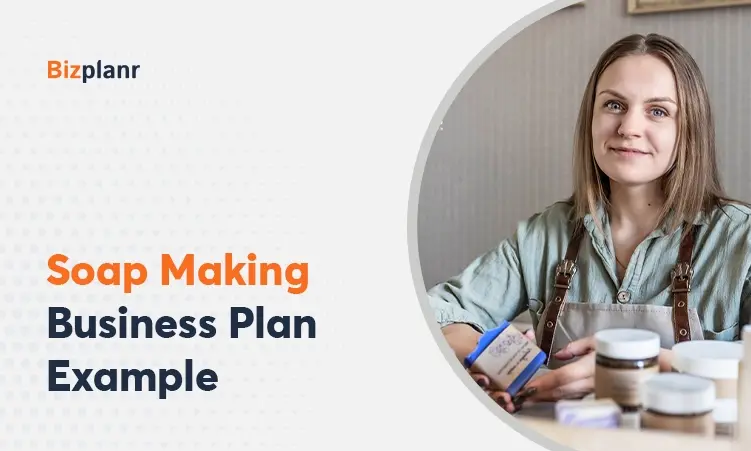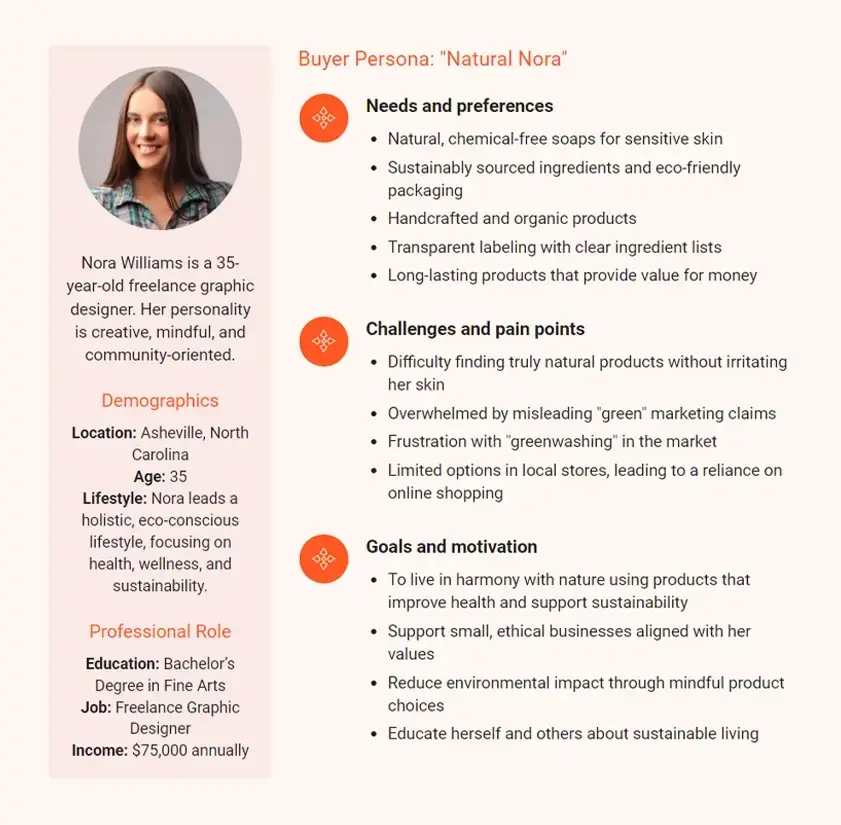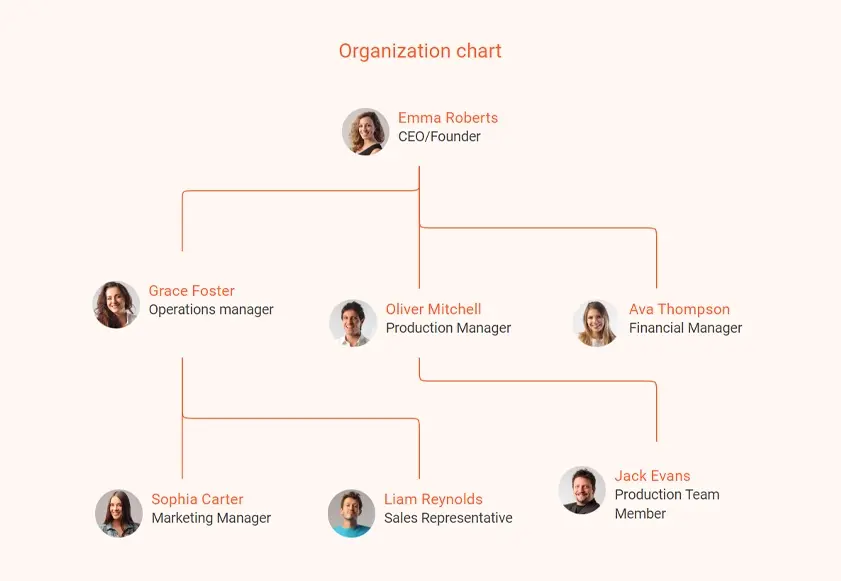Soap has been a household essential for centuries and every day, people look for the perfect bar—whether it's for skincare, fragrance, or just a little luxury in their routine.
Moreover, with the growing demand for quality soaps and handmade, natural bars, the soap manufacturing industry is booming and worth over $46 billion in the US.
So, there’s no better time to jump into this creative business venture.
However, it requires a solid business plan to bring your unique ideas to life, build a strong foundation, and stand out in the competitive market.
Need help writing one? Not to worry!
Explore this soap-making business plan template that walks you through all the key steps to develop a comprehensive yet effective business plan. But before that...
Why Do You Need a Soap Making Business Plan?
Whether you're an experienced soap maker looking to expand an existing business or a newbie aiming to establish a new soap production company, a well-crafted business plan is essential.
A soap making business plan is not just a professional document; it's a roadmap for planning, managing, and growing a soap-making company.
Here are a few key reasons why you need a soap making business plan:
- Defines your business goals, target market, ownership structure, marketing plans, and strategies to achieve long-term success.
- Attracts potential investors or lenders and secures funding by presenting how your business will generate revenue and profits.
- Helps you set SMART (specific, measurable, achievable, relevant, & time-bound) goals, track your progress, as well as revise your strategies as needed.
- Allows you to articulate your unique value proposition and highlight what sets your products apart from competitors.
- Provides a framework for making strategic decisions while expanding your product line, entering a new market, or adjusting a pricing strategy.
All in all, a soap making business plan serves as a detailed blueprint that guides you through every aspect of your soap making journey and its sustainable growth.
How to Write a Soap Making Business Plan?
Writing a professional soap making business plan involves several key steps to encapsulate your business concept.
Here's a guide on how to draft each business plan section in detail:
1) Executive summary
An executive summary is a quick, concise overview of the entire soap making business plan that offers a high-level introduction to your business.
In fact, it’s the first section that every potential investor or stakeholder will read to get a better idea of your soap making company.
If they don't find it interesting or compelling enough, they won't read it further and might reject your business proposal. So, ensure that you keep your executive summary simple, brief, and persuasive.
Ideally, you must include the following details in this section:
- Business concept and its purpose
- Mission and vision statements
- Soap production industry & target market
- Unique value propositions
- Marketing and branding approach
- Financial projections
In short, the primary goal of this section is to capture the readers' interest and encourage them to learn more about your business.
Liking the plan you're reading? It's AI generated.
Generate Your Own Using Bizplanr AI
2) Business overview
The business overview section is a detailed description of your soap making business and what it’s all about.
It includes everything about your business, from its foundational facts to futuristic goals and growth plans that every potential financial backer needs to know.
To plan this section, consider answering these questions:
- What's the legal structure and registered name of your business?
- Where's your soap production company located? And why have you selected that place?
- What type of soap making business do you own? (handcrafted, organic, wholesale, private label, or specialty soaps)
- Who are the company owners or partners?
- When and why did you start this business? What milestones have you achieved till now?
- What are the short-term goals and long-term objectives?
Answering such questions will help you present your business concept in detail and provide a clear snapshot of your soap making company. So, keep it concise and impressive.
3) Market analysis
The market analysis section provides an in-depth understanding of the soap making industry, including the market trends and target audience.
This will help investors or stakeholders get valuable insights into the specific market niche, the demand for soaps, potential customers you expect to serve, and top competitors.
So, you'll need to conduct thorough market research and incorporate the following essential components in this section:
- Industry overview
- Market size and growth potential
- Target market segment
- Key competitors (other artisanal soap makers & larger natural brands)
- SWOT analysis
- Regulatory environment
Moreover, try to develop a buyer persona to better understand the ideal customer needs and preferences. Here's an example:
4) Sales and marketing plan
Your sales and marketing plan outlines the strategies you'll use to promote your soap making business, generate sales, and grow your customer base.
As a soap maker, you need to develop strategies that cater to your target market and the unique selling points of your product offerings. These strategies also help you attract and retain your customers.
The following are the marketing tactics and sales techniques you may use for your soap making business:
- Promote on social media platforms
- Participate in local craft fairs
- Engage in direct sales at markets or wholesale to retailers
- Develop an SEO-friendly e-commerce website
- Collaborate or partner with influencers and boutique stores
- Advertise in local newspapers & magazines
In addition to that, consider describing any special offers, loyalty programs, or seasonal promotions that encourage repeat purchases and draw new buyers.
5) Products and service offerings
This section highlights what your soap making company intends to offer and how it will meet the target market's needs.
So, start this section with a precise description of your main products, along with their benefits, unique features, and the value they bring to customers.
List out the different types of soaps or other cleansing products you intend to offer. For instance:
- Moisturizing bars
- Exfoliating soaps
- Specialty soaps
- Seasonal collections
- Limited-edition products
After that, showcase your additional products (gift sets, soap dishes, bath accessories, or lotions) or services (customization or subscription options).
If possible, try to include your product images or design mockups to make your business plan visually appealing and more engaging.
6) Operations plan
The operations plan offers practical insights into the day-to-day activities and processes required for the smooth functioning of your soap business.
So, try to cover all your operational intricacies and clarify how they directly impact the quality of your products.
Consider including the below elements in your operations plan:
- Staffing needs and training
- Soap production process (along with techniques & equipment used)
- Supply chain management
- Quality control measures
- Packaging and storage
- Order shipping and delivery
Adding these details to your plan will help you lay out a strong foundation for your business operations, which will eventually help you manage your business effectively.
7) Management team
A well-organized and experienced management team is important for the overall success of soap making business.
Why? Because it highlights how your company will be led, how responsibilities will be managed, and how your team will work together to achieve business goals.
While framing this section, introduce your key team members, such as the founder, production manager, operations executive, and quality control supervisor. Also, describe their experience and duties within the company.
Next, present your organizational structure that defines how roles and responsibilities are allocated within your company.
You may create a hierarchical structure for your soap production business as shown below:
By clearly showing authority, you show investors or stakeholders that your team is responsible for driving the company’s vision and managing business operations.
If applicable, mention your advisory board members or consultants who add credibility to your business and support your plan.
8) Financial plan
The financial plan is an essential section of your soap making business plan as it's a comprehensive overview of your financial health and viability.
Typically, it includes several financial statements and projections broken out both monthly or quarterly. As well as it shows how your soap business will achieve its financial goals within the next few years of operation.
So, you need to cover all these reports in your soap making financial plan:
- Business startup costs
- Sales & revenue forecasts
- Operating expenses
- Profit and loss statement
- Cash flow projections
- Balance sheets
- Break-even analysis
Further, summarize sensitivity analyses for the different types of scenarios and clearly outline how much funding you need as well as how you plan to use it.
And don't forget to mention your repayment plan for the borrowed amount, including interest and timeline.
Here’s an example of a few financial projections that you may refer to formulate yours:
Profit and loss statement
| Income Statement | Year 1 | Year 2 | Year 3 |
|---|---|---|---|
| Revenue | $150,000 | $180,000 | $210,000 |
| Cost of Goods Sold (COGS) | $60,000 | $72,000 | $84,000 |
| Gross Profit | $90,000 | $108,000 | $126,000 |
| Operating Expenses | |||
| - Salaries and Wages | $30,000 | $35,000 | $40,000 |
| - Rent | $12,000 | $12,000 | $12,000 |
| - Utilities | $3,600 | $4,000 | $4,500 |
| - Marketing and Advertising | $5,000 | $6,000 | $7,500 |
| - Insurance | $2,400 | $2,500 | $2,600 |
| - Supplies and Materials | $4,000 | $5,000 | $6,000 |
| - Miscellaneous Expenses | $2,000 | $2,500 | $3,000 |
| Total Operating Expenses | $59,000 | $67,000 | $75,600 |
| Operating Profit (EBIT) | $31,000 | $41,000 | $50,400 |
| Interest Expense | $1,000 | $900 | $800 |
| Net Profit Before Tax | $30,000 | $40,100 | $49,600 |
| Tax Expense (20%) | $6,000 | $8,020 | $9,920 |
| Net Profit | $24,000 | $32,080 | $39,680 |
Cash flow statement
| Cash Flow Statement | Year 1 | Year 2 | Year 3 |
|---|---|---|---|
| Cash Inflows | |||
| - Sales Revenue | $150,000 | $180,000 | $210,000 |
| - Loans | $20,000 | $0 | $0 |
| Total Cash Inflows | $170,000 | $180,000 | $210,000 |
| Cash Outflows | |||
| - COGS | $60,000 | $72,000 | $84,000 |
| - Operating Expenses | $59,000 | $67,000 | $75,600 |
| - Capital Expenditures | $10,000 | $5,000 | $5,000 |
| - Loan Repayment | $5,000 | $5,000 | $5,000 |
| - Tax Payments | $6,000 | $8,020 | $9,920 |
| Total Cash Outflows | $140,000 | $157,020 | $179,520 |
| Net Cash Flow | $30,000 | $22,980 | $30,480 |
| Opening Cash Balance | $0 | $30,000 | $52,980 |
| Closing Cash Balance | $30,000 | $52,980 | $83,460 |
Balance sheet
| Balance Sheet | Year 1 | Year 2 | Year 3 |
|---|---|---|---|
| Assets | |||
| Current Assets | |||
| - Cash | $30,000 | $52,980 | $83,460 |
| - Inventory | $10,000 | $12,000 | $14,000 |
| - Accounts Receivable | $15,000 | $18,000 | $21,000 |
| Total Current Assets | $55,000 | $82,980 | $118,460 |
| Fixed Assets | |||
| - Equipment | $25,000 | $30,000 | $35,000 |
| Total Fixed Assets | $25,000 | $30,000 | $35,000 |
| Total Assets | $80,000 | $112,980 | $153,460 |
| Liabilities | |||
| Current Liabilities | |||
| - Accounts Payable | $10,000 | $12,000 | $14,000 |
| - Short-Term Loans | $5,000 | $5,000 | $5,000 |
| Total Current Liabilities | $15,000 | $17,000 | $19,000 |
| Long-Term Liabilities | |||
| - Long-Term Debt | $20,000 | $15,000 | $10,000 |
| Total Liabilities | $35,000 | $32,000 | $29,000 |
| Equity | |||
| - Owner's Equity | $45,000 | $80,980 | $124,460 |
| Total Equity | $45,000 | $80,980 | $124,460 |
| Total Liabilities & Equity | $80,000 | $112,980 | $153,460 |
By developing a comprehensive and realistic financial plan, you demonstrate your business's growth potential and profitability in the long run, allowing potential backers to make informed decisions.
Download the Soap Making Business Plan Template
So, are you ready to start drafting your own soap making business plan? But need help with that? Well, look no further; here's our soap making business plan template PDF to get started.
This advanced template has been prepared especially for entrepreneurs who need extra support in soap production business planning. Import the data into the editor and revise it as per your specific needs.
Conclusion
Now, that's a wrap! We've discussed all the key elements of a soap making business plan, such as an effective executive summary, thorough market analysis, compelling marketing strategy, and realistic financial projections.
So, it should be easier for you to write a comprehensive business plan for your soap making company.
But if you still need some extra guidance on presenting your plan, consider using a modern AI business plan generator such as Bizplanr.
It helps you prepare an actionable plan efficiently and quickly. All you need to do is answer a few easy questions and its robust AI assistant will generate your plan in minutes!
Get Your Business Plan Ready In Minutes
Answer a few questions, and AI will generate a detailed business plan.
Frequently Asked Questions
What are the key milestones to include in my business plan?
Include these key milestones in your business plan:
- Timeline for new product launch
- Major marketing campaigns for customer acquisition
- Growth plans for entering into new markets
- Specific business valuation goals
How do I create a financial plan for a soap making business?
Consider following these steps to create a financial plan for your soap making business:
- Estimate the initial expenses and startup costs
- Project sales revenue (how many units of soap you expect to sell)
- Calculate the Cost of Goods Sold (COGS)
- Determine fixed and variable costs
- Evaluate all the cash flows
- Develop profit & loss statement
- Conduct break-even analysis
If you want to develop effective and realistic financial projections for your soap making business, use advanced financial forecasting software.
What should I include in the executive summary of my business plan?
You should include the following components in your business plan executive summary:
- Business concept and vision
- Objectives
- Industry overview & target market
- Unique value propositions
- Marketing strategies
- Financial projections
How to get funding for your soap making business?
While getting funding for your soap making business, consider:
- Creating a professional business plan (including financial projections, market analysis, and a detailed strategy for growth and profitability)
- Finding potential funding resources (such as bank loans, private investors, government grants, and crowdfunding)
- Developing a compelling pitch (highlighting market opportunities and your business's unique aspects)
- Gathering necessary documents (like credit reports or legal papers)
- Building strong relationships with potential investors or lenders
- Applying for loans or investments
Can I start my soap making business without a formal plan?
Of course! You can start a soap making business without having a formal plan, but it may lead to a few challenges, like lack of guidance, financial risks, and missed opportunities.
In contrast to that, having a professional plan helps you guide your growth and increase your chances of success.








